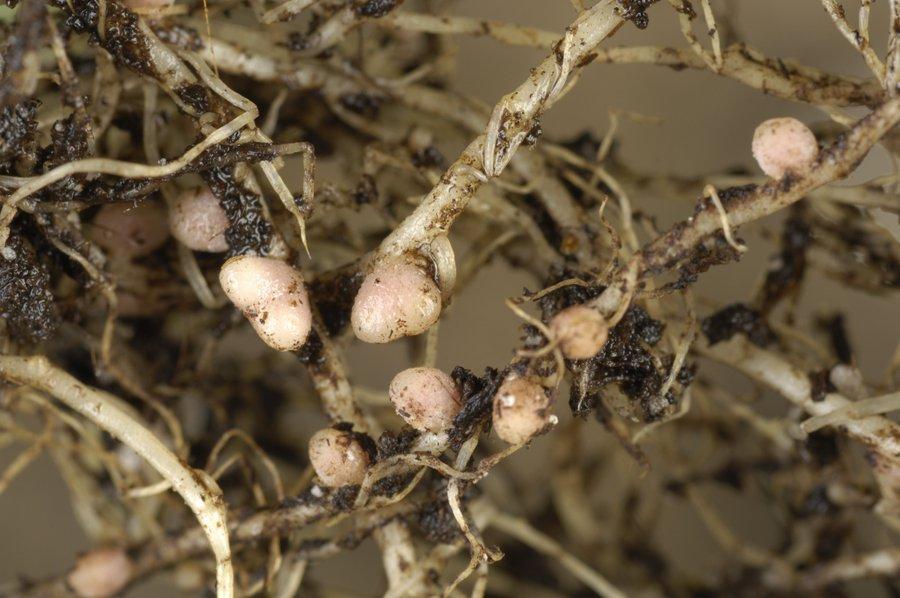
Submitted by H.L. Jones on Mon, 01/11/2021 - 00:00
New study by the Department's Professor Giles Oldroyd and Jian Feng shows how legume cells in the nodule transition into the nitrogen-fixing state control multiple different mechanisms, which support bacteria inside the nodules and the enzyme nitrogenase necessary for nitrogen fixation. Legumes engage with nitrogen fixing bacteria in nodules, which provide a specilised environment for nitrogen fixation.
These discoveries were facilitated by the first detection of the nodulation master regulator protein nodule inception (NIN) that controls many aspects of nodulation and now is shown to also control this transition into nitrogen fixation. The work, published in Science, provides an important advance in our understanding of the symbiotic relationship between plants and nitrogen-fixing bacteria and facilitates future engineering of nitrogen fixation into cereals, dispensing the need for fertilising cereal crops by enabling them to fix their own nitrogen.
First described in 1999, NIN is essential for developing a new root organ, called a nodule, where symbiotic bacteria fix atmospheric nitrogen into ammonia. Although it has been studied for two decades, the NIN protein has been difficult to detect, and it remains unknown how NIN coordinates multiple stages of nodule formation.
Jian Feng, lead author, said, “Solving the problem of how NIN could be detected revealed surprising results about the processing of NIN, that explained how this protein controls many different aspects of nodulation.”
Proteolytic processing of NIN appears to allow the protein to activate processes associated with nitrogen fixation and this late processing of NIN allows the protein to have different early and late functions in establishing nitrogen-fixing nodules.
The corresponding author, Professor Giles Oldroyd, Director of the Department's Crop Science Centre, remarked “we are striving to transfer the capability to fix nitrogen to cereal crops. Understanding how nitrogen fixation is induced in the legume nodule is important in helping us transfer this process to cereals.”
